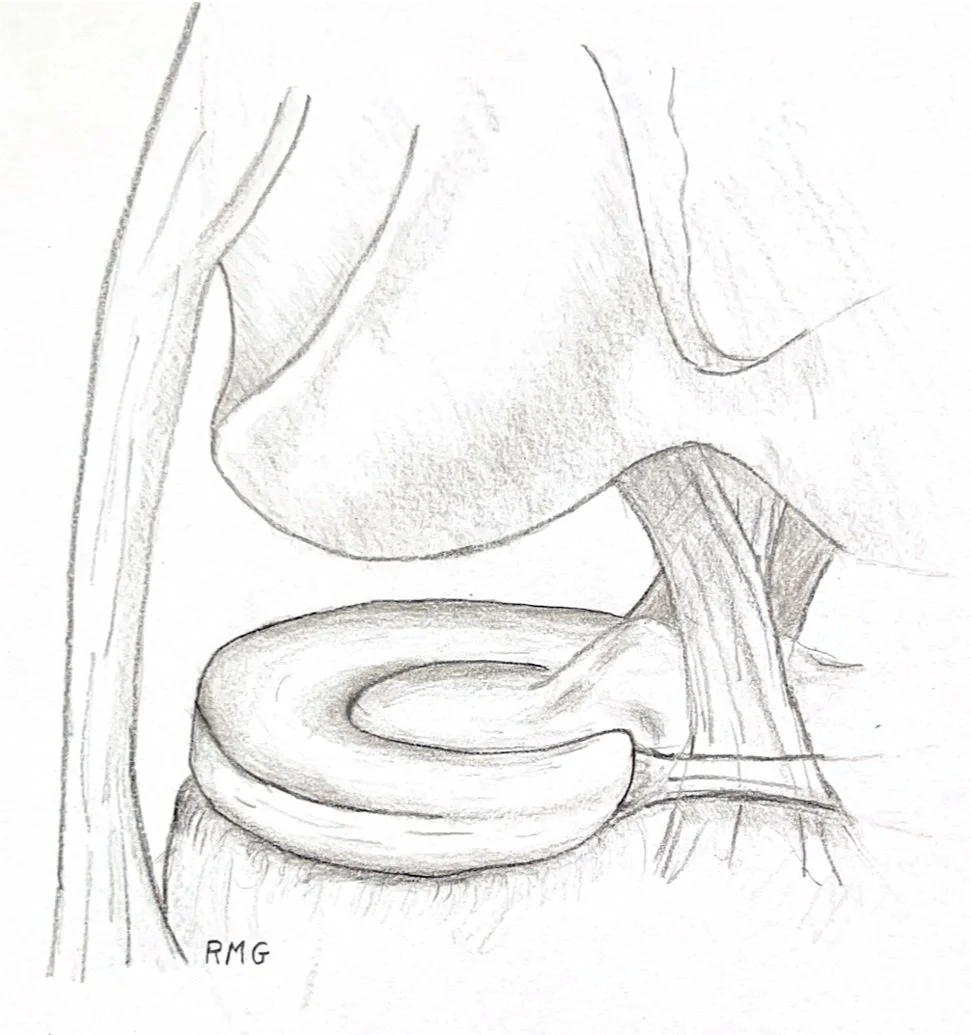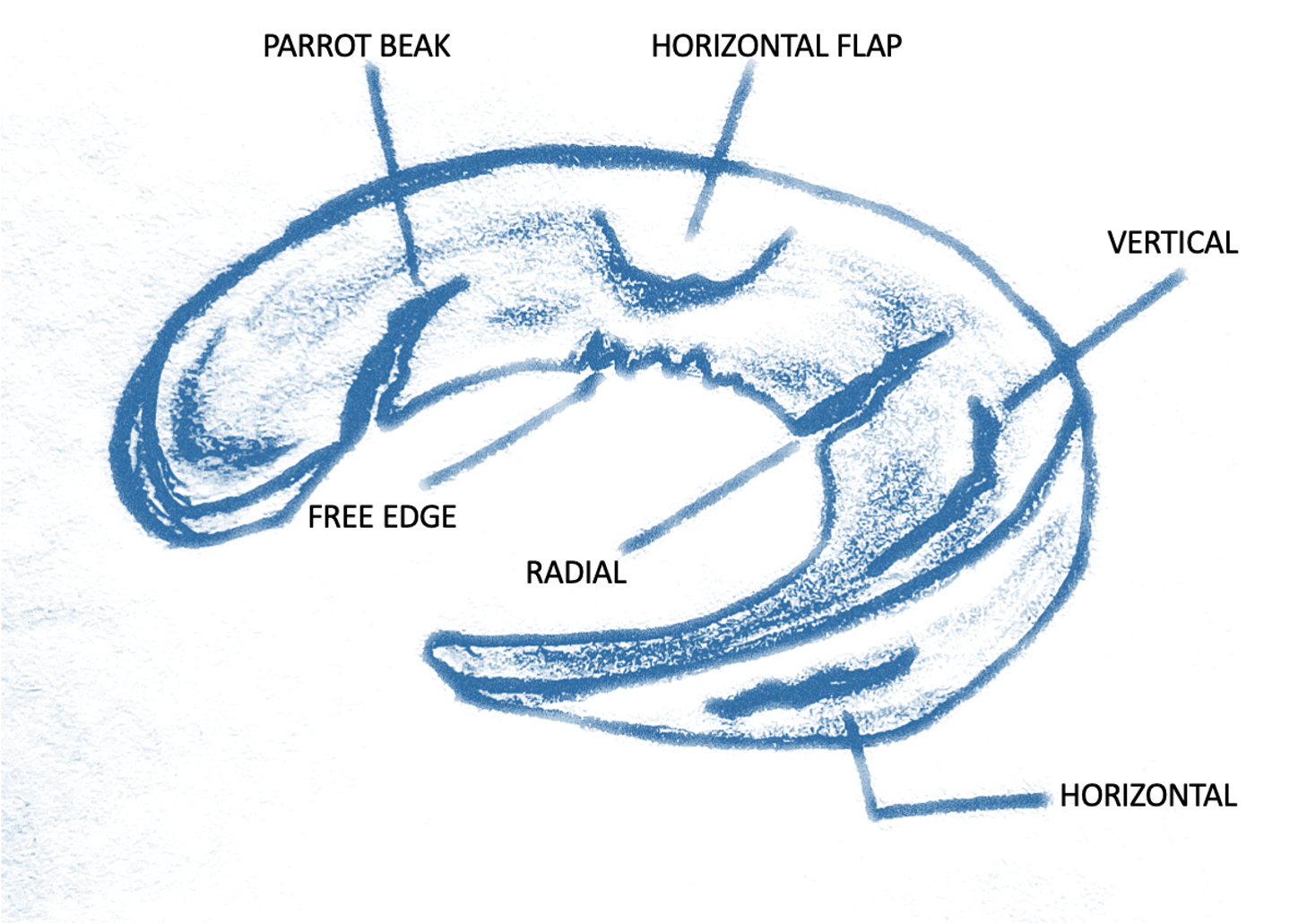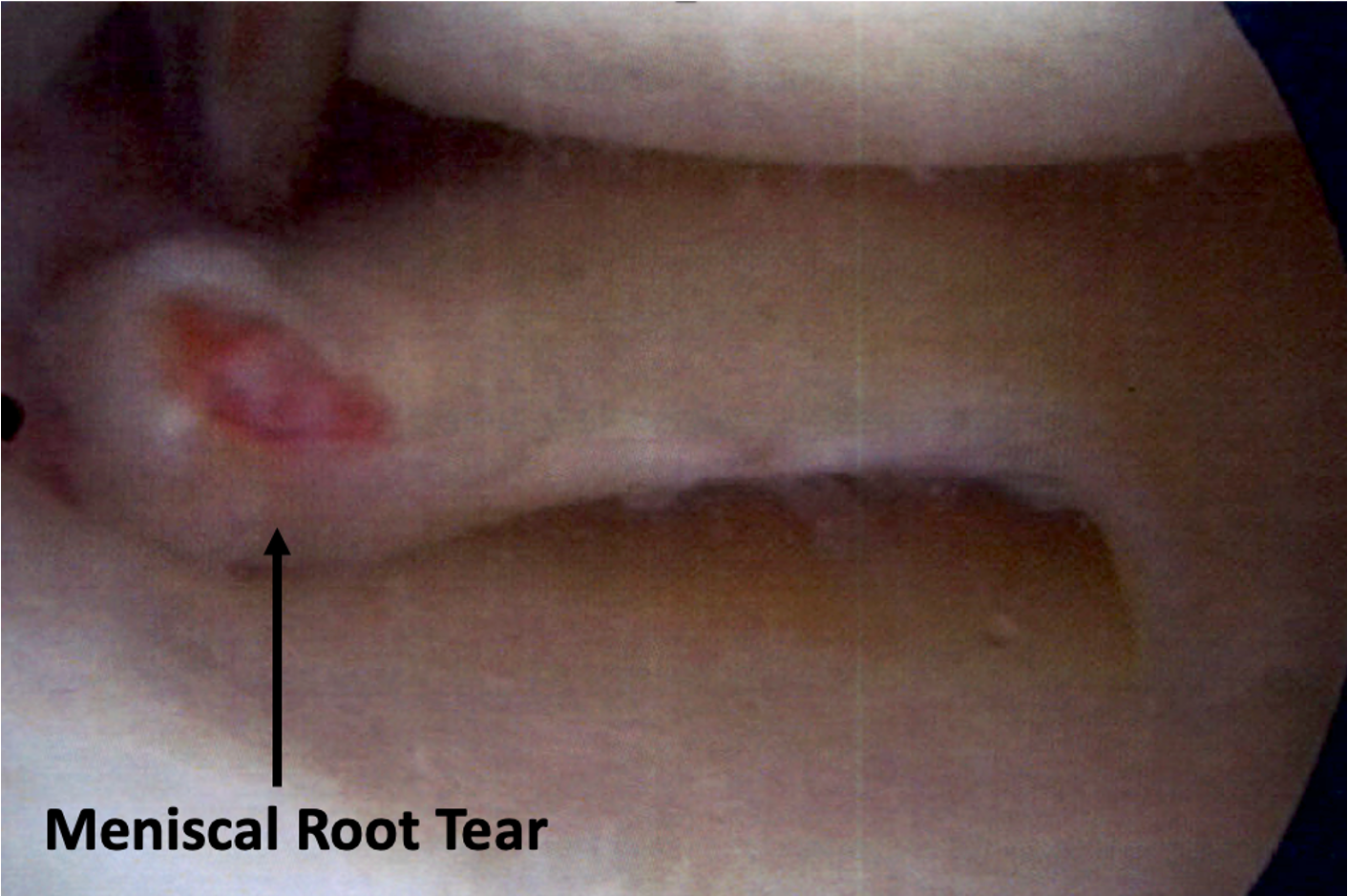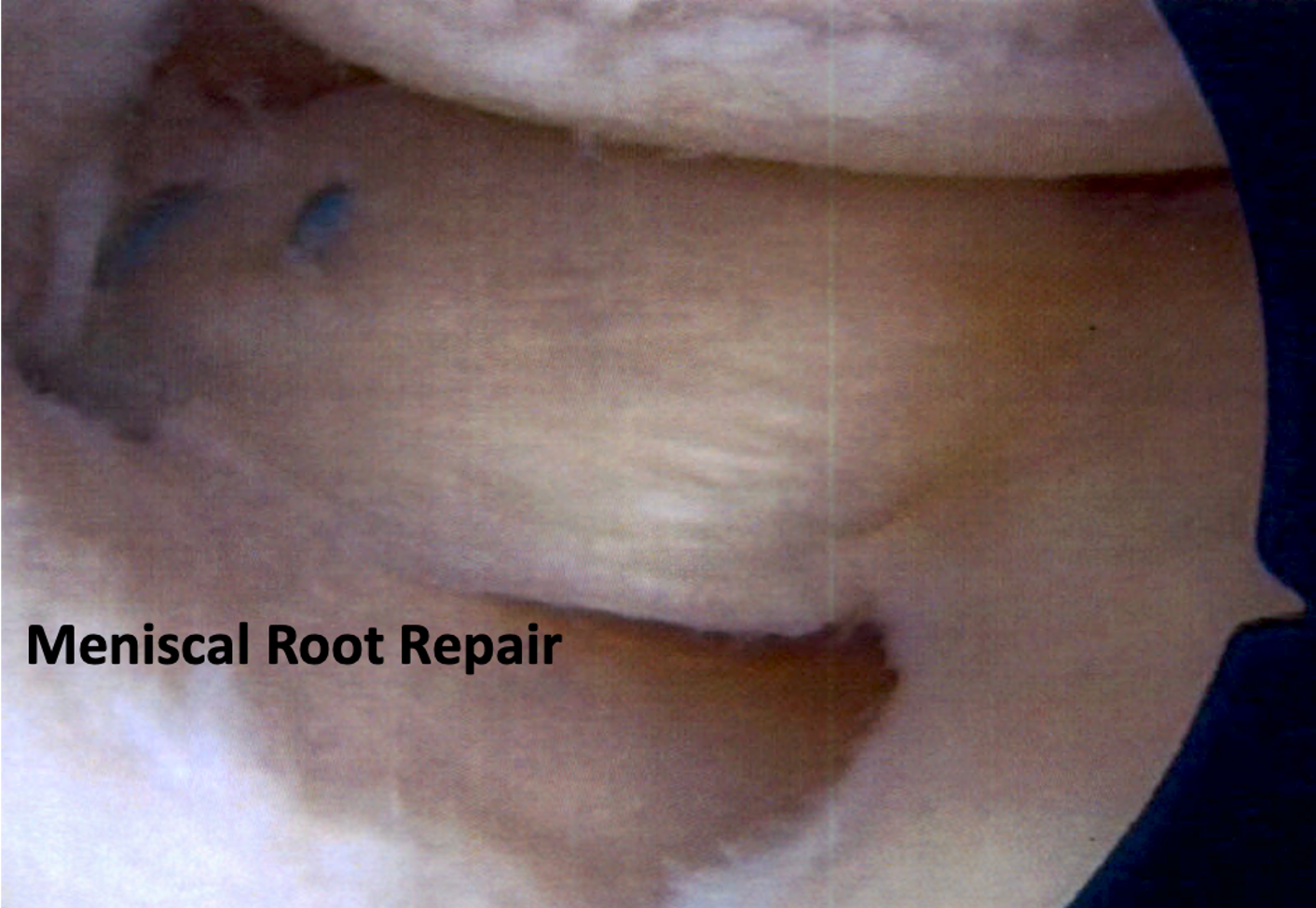
Meniscus
(UNDER CONSTRUCTION —FURTHER INFORMATION/IMAGES IN PROGRESS)
What is it?
The meniscus is a C-shaped disc of fibroelastic cartilage that exists between the femur (thigh bone) and tibia (shin bone) in your knee.
The meniscus serves as the “shock absorber” in the knee, functioning to disperse and transmit forces across the cartilage and increase congruency in the knee joint. It also acts as a secondary stabilizer of the knee.
You have two menisci in each knee: the medial and lateral menisci
The meniscus is anchored to bone at the anterior and posterior aspects (roots). It also has attachments to the surrounding capsule.
Evaluation
Meniscal injuries are common. They are the most common reason for knee surgery.
Meniscal injuries most typically present as pain localized to the joint line of the knee (inside/medial or outside/lateral).
Occasionally there will be associated mechanical symptoms (clicking, catching, popping, or locking).
Pain is often experienced at the extremes of motion (knee bent all of the way or out straight).
Clinical evaluation typically includes:
X-rays
Thorough physical exam
MRI (if a tear is suspected)
Injury/Tear Types
Meniscal tears can occur from a variety of mechanisms related to acute trauma (direct impact injury twisting, associated ligamentous injury, etc.), but also can occur as a result of degeneration (“degenerative tear”).
Meniscal tears come in all shapes/orientations and sizes. The type and size of tear matters in terms of treatment. Small, stable tears do not necessarily need any surgery. Large, unstable tears, on the other hand, often do. Please see the pictorial representation of the tears for further explanation.
Tear types:
Horizontal
Vertical/longitudinal
Flap tears
Root tears
Bucket handle tear
Treatment
Non-operative vs operative
Treatment depends on a multitude of factors:
Tear type and size
Tear location
Presence or absence of arthritis
Symptom correlation
Surgical options:
Meniscectomy — trimming out of the torn portion of the meniscus, leaving behind as much good/non-torn meniscus as possible.
Meniscal repair — stitches placed inside the knee to stabilize the meniscus while it heals.
Meniscal root repair — stitches placed through the meniscus and threaded through a bone tunnel to repair the root back down to bone.
Meniscal transplant — salvage procedure to replace a nearly absent or extensively torn meniscus. There needs to be minimal to mild arthritis present for this to be considered.
The meniscus is a poorly vascularized structure. It has a very limited healing capacity on its own. Peripheral tears (near the capsule/outside edge) have some healing capacity, but central and free edge tears have limited to no intrinsic healing ability.
-

Meniscus
The meniscus serves as the “shock absorber” of the knee. It is the padding that exists between the femur (thigh bone) and the tibia (shin bone) that disperses force across the cartilage of the knee.
The meniscus is a C-shaped disc of cartilage that exists on both sides of your knee (medial and lateral menisci). The meniscus is anchored to bone at the anterior and posterior aspects. It also has attachments to the surrounding capsule. There are subtle differences between the medial and lateral menisci, mostly related to size and peripheral/capsular attachments.
Meniscal tears can occur from a variety of mechanisms related to acute trauma (direct impact injury twisting, associated ligamentous injury, etc.), but also can occur as a result of degeneration (“degenerative tear”).
Meniscal tears come in all shapes/orientations and sizes. The type and size of tear matters in terms of treatment. Small, stable tears do not necessarily need any surgery. Large, unstable tears, on the other hand, often do. Please see the pictorial representation of the tears for further explanation.
-

Meniscal Tear Types
Horizontal Tears
Longitudinal/Vertical Tears
Flap Tears
Root Tears



